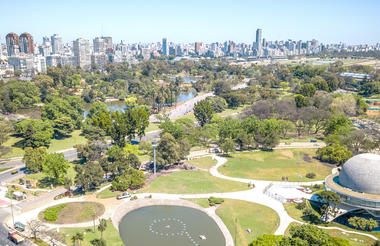Peru is most famous for the sacred archaeological site of Machu Picchu – visited each year by scores of intrepid hikers who brave the Inca Trail’s arduous slopes to explore the age-old ruins. The country’s attractions extend far beyond the mystical allure of this legendary location and include palm-fringed beaches, quaint Andean villages and archaeological treasures that predate Machu Picchu by hundreds of years – all imbued with the nation’s rich melange of indigenous and colonial cultures. Equally enticing are the exotic reaches of Peru’s Amazon rainforest; Lima’s superb eateries, exquisite architecture and effervescent nightlife; the glittering, mountain-ringed waters of Lake Titicaca; and the vibrant city of Cusco, referred to by the Incas as ‘the centre of the world’.
Peru’s capital is a fantastic city to tour, dotted with a multitude of cultural sites and beautifully preserved architecture. Founded by the conquistador Francisco Pizarro in 1535, Lima was first named ‘City of Kings’ – a biblical reference to the ‘Three Wise Men of the East’ – before its name was changed by the Spanish colonialists. The most significant historical buildings are located around the Plaza Mayor, the most notable being the Government Palace, where one can still observe the changing of the guard performed by the Húsares de Junín. The beautiful Cathedral and the various small palaces and colonial balconies also play also their part in the beauty of the city. Another highlight is the famed Larco Herrera Museum, documenting the millennial cultures that preceded the Inca civilization and containing a priceless collection of pre-Columbian artifacts, including some of South America's finest pre-Inca erotic pottery.

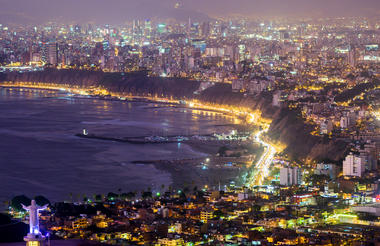
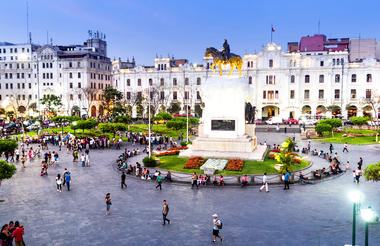
Huayllabamba is located in the province of Urubamba, in the Cusco region of southern in Peru. Situated 15 minutes away from Urubamba, the town is well known for the quality and size of the corn from the fields. Huayllabamba celebrates the virgin Natividad or Mamacha Natacha every September 7th, with dancers and processions. The popular festivity features lots of color, dance, music and food.



Perched high up in the Andes, Machu Picchu Pueblo is a riverside town known for its proximity to the famous Machu Picchu ruins. This cloud-forest town is encircled by towering forested cliffs and boasts an endless array of hotels, restaurants, markets and labyrinthine streets. Machu Picchu Pueblo, also known as Aguas Calientes, serves as an excellent base to explore the renowned ancient archaeological site of Machu Picchu. Visitors can enjoy various other activities, including having a relaxing massage after a long day of exploring, taking a stroll through lush rainforest to the Mandor Waterfalls, embarking on an adventurous hike up the Putucusi Mountain or soaking in the relaxing thermal baths with the Andes as your backdrop. Don’t miss the Machu Picchu Museum and Botanical Gardens, displaying the area’s history and diversity of indigenous flora.
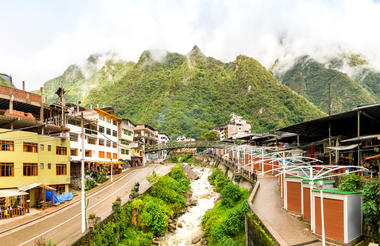
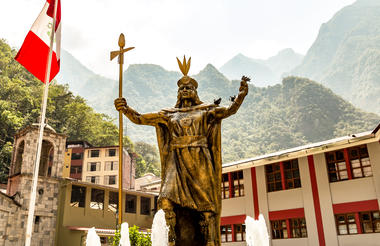
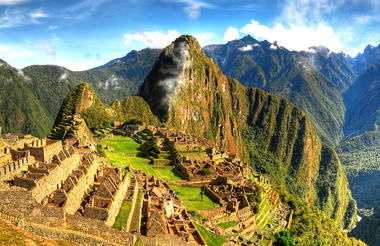
Once called the ‘Navel of the World’ by the Incas, Cusco rises in the southern Andes of Peru, where colonial grandeur meets the enduring stonework of the Inca Empire. A UNESCO World Heritage Site, it serves as the main gateway to Machu Picchu, the Sacred Valley, and surrounding ruins. At its centre, the Plaza de Armas—once Huacaypata—remains alive with cafés, arcades, and the 16th-century Cusco Cathedral, built from Sacsayhuamán’s stones. Nearby, the San Blas district unfolds with whitewashed adobe houses, blue balconies, and workshops where artisans craft metalwork, woodcarvings, and sacred art. Across the city, layers of history reveal themselves in landmarks such as the Korikancha, the Inca street of Hatun Rumiyoc with its twelve-angled stone, the Museum of Colonial Art, and the ancient shrines and water temples scattered through the surrounding hills.
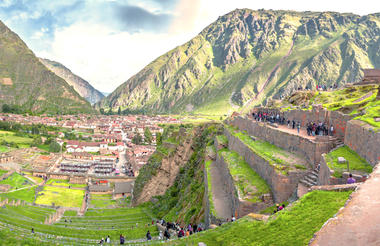
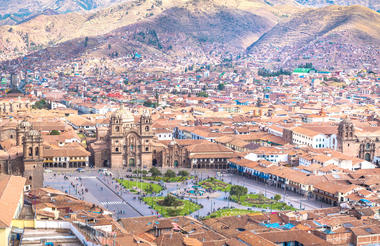
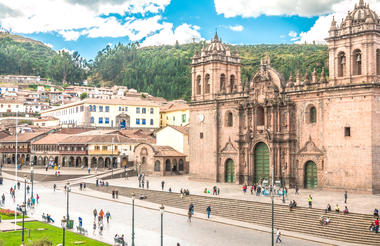
Situated high in the Andes Mountains on the border between Peru and Bolivia, Lake Titicaca is considered the highest commercially navigable lake in the world. The area was once a stronghold of Inca culture – and this ancient legacy is still evident in the many Inca ruins dotted across the shoreline, as well as the vibrant traditional handwoven textiles and clothes. Among the lake’s most popular attractions are the 42 floating reed islands of the Uros people, accessible from Puno in the east. On Santa Maria, the largest of these, tourists can arrange tours into private local homes to experience traditional culture.



Home to ancient traditions and cultures that are fast disappearing, Bolivia is the continent’s most indigenous country, with 60% of its inhabitants descended from Native Americans - a rich heritage that is evident in the local art, cuisine, music and traditions. Equally as fascinating is the incredibly diverse landscape, stretching from the central Andes to the Amazon Basin and encompassing a terrain that includes snowy peaks, the world’s highest navigable lake, rainforests, dry valleys, and volcanoes both active and extinct. Whether you are in search of colourful festivals, ancient remains or an outdoor adventure, Bolivia is a tourist’s treat waiting to be discovered.
Surrounded by the peaks of the Andean Plateau and overlooked by the 6402m Mt. Illimani, La Paz is a truly breathtaking city whose buildings sprawl across the surrounding canyon, reaching altitudes of up to 4100m. While the sight of the city is reason enough to visit, La Paz holds a number of attractions sure to keep tourists fascinated. Take a walk along Calle Jaen, a colonial street lined with museums, explore the city's cathedrals or wander through some of the colourful markets, including the 'Witches' Market' where llama foetuses and dried frogs can be found for sale.



Located in the southwest of Bolivia, the small town of Uyuni is not a tourist destination per se, but rather a starting point for those wishing to explore the region’s extraordinary landscape. Group tours leave regularly from Uyuni, taking visitors on a scenic journey that includes an antique train cemetery, thermal baths, rock formations, and the remarkable Uyuni salt flats. Spanning more than 10 000 square kilometres and containing 10 billion tonnes of glistening salt, 'Salar de Uyuni' is the world’s largest salt plain, offering breathtaking views that place it amongst Bolivia’s main attractions.
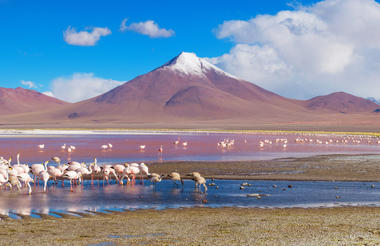
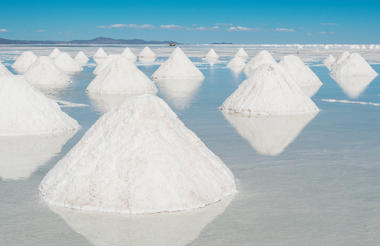
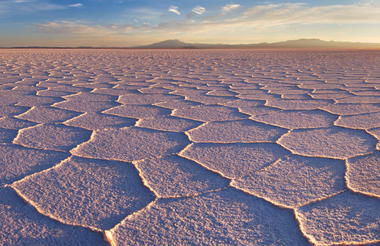
The Siloli Desert is the world’s highest desert, resting at an altitude of 4550 metres above sea level. It is located close to Bolivia’s border with Chile and considered to be an extension of the neighbouring Atacama Desert. Visitors to this remote part of the world can look forward to dramatic views of geometrically cracked salt pans and rust-coloured hills. The desert’s most iconic feature is the Árbol de Piedra, a seven-metre high sandstone formation that resembles a gnarled tree and was shaped by the region’s harsh winds over thousands of years. The tiny settlement of Ojo de Perdiz has a spattering of guesthouses and a fascinating community, while the nearby Pastos Grandes Lagoon is a shallow salt lake set below a volcanic mountain where you can see flocks of flamingos and revel in the breathtaking scenery.



Chile is a slender ribbon of land flanked by the South Pacific Ocean to the west, and surrounded by Peru, Bolivia and Argentina. The country is a mystifying amalgam of extraordinarily diverse scenery, vibrant cultures, and exciting cities. From the fjords and glaciers of Patagonia and Antarctica to the driest desert in the world at Atacama, volcanoes to tropical islands, Chile boasts nearly every landscape imaginable. One of the country’s defining characteristics is its warm culture, summarised in its motto of ‘buena onda’ (‘good vibes’). Rituals surrounding relaxation and connection - such as the ‘mate’ tea custom - are integral to Chilean culture, as well as a strong connection with food, music and dance. World-class cities like Santiago weave together 21st century global culture and time-honoured traditions, and provide everything from phenomenal restaurants and buzzing nightlife to gorgeous, trendy beaches. Wine lovers will also find worlds of taste to explore in the lush valleys of vineyards offering some of the best wine on earth.
The small town of San Pedro de Atacama is a scenic oasis in the Atacama Desert, surrounded by the imposing volcanic peaks of the Chilean altiplano and located close to several major archaeological and natural attractions. The fascinating ancient sites of Tulor and Quitor, the enthralling Atacama Salt Flat, the jaw-dropping turquoise Altiplanic Lagoons, and the other-worldly Tatio Geysers all lie nearby, and as a result, the village has become a significant tourist destination. Despite its small size it encompasses a wide range of restaurants; however, it is also known for its ‘western feel’ and retains an old-world charm. History enthusiasts will enjoy a visit to the atmospheric 17th-century Iglesia San Pedro. However, it is really the breathtaking surroundings that make this destination special.
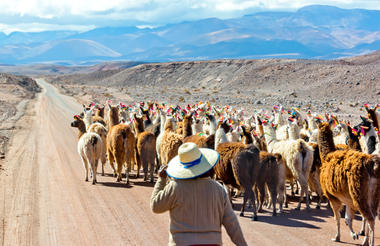
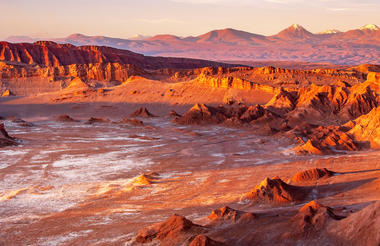
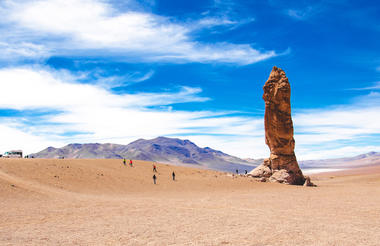
Ranging from balmy subtropical reaches in the north to the frosty Antarctic shores of the Patagonian south, Argentina is one of the world’s most geographically diverse countries. Its kaleidoscope of landscapes offers endless adventure and leisure opportunities, and this natural variety – coupled with its warm, animated locals, delectable carnivorous cuisine, and fascinating history – makes it a captivating and unforgettable travel destination. Allow yourself to be spellbound by the spectacular torrents of Iguazu Falls, the sprawling ski slopes of Bariloche, the vibrant capital of Buenos Aires, or the age-old Inca city of Humahuaca. Argentina has gifts to delight and mesmerize even the most seasoned explorer.
Situated on Argentina’s stunning Rio de la Plata coast, Buenos Aires is a thriving portside capital defined by a rich history, vibrant culture, and strong European influence - thus nicknamed the Paris of South America. Countless museums covering a cornucopia of subjects; an active theatre culture; carnivorous buffets second to none; sensuous tango performances; a mosaic of architecture; and shops to fit all fancies – all these facets and more make up the seductive blend that is Buenos Aires. Some of the city’s highlights include the buzz of the La Bombonera Stadium; tango and milonga venues like the Bohemian La Catedral; and heritage architecture such as that at the Cementerio de la Recoleta, where visitors can wander through a ‘city’ of massive statues and marble mausoleums. Don’t miss the International Festival of Independent Cinema and the vibrant annual Pride Parade.
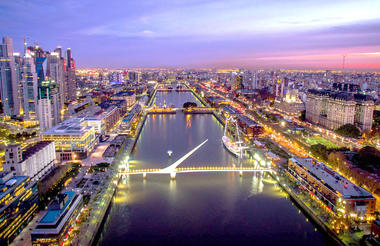

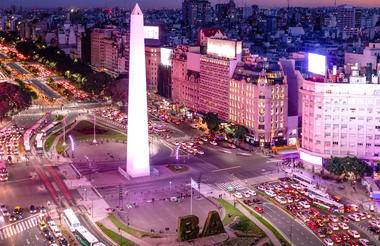
Located in the heart of Argentina, the town of San Antonio de Areco rests on the southern bank of the magnificent Areco River. Set just an hour's drive from Buenos Aires, the town is a fantastic day-trip option for those staying in the capital. This charming 18th-century town has been named the National Capital of Tradition, as it is infused with authentic cultural heritage and is felt by many to be the home of the gaucho lifestyle. Stroll along the lovely riverside promenade, visit the fascinating Ricardo Guiraldes Gaucho Museum in Criollo Park and wander down quaint cobblestoned streets to discover the picturesque, historic Ruiz de Arellano Square. Visitors can also enjoy cultural tours, horse-drawn carriage rides, and numerous other activities. The river is a great location for rowing (multi-lingual classes are on offer).



Resting at the confluence of the Parana and Iguazu rivers, Puerto Iguazu is a charming tourist city that serves as the gateway to Iguazu Falls on the Argentinian side of the border. It is surrounded by red rocky landscape interspersed with verdant forest inhabited by abundant wildlife. The city is a popular tourist destination and draws visitors from around the globe to visit the Iguazu National Park and its breathtaking waterfalls. Visitors can also explore the spectacularly scenic surroundings through a variety of activities including: jumping on one of the many tours on offer, enjoying an array of outdoor activities, visiting the Guira Oga - 'The House of Birds', and soaking up the views from the Hito de las Tres Fronteras, a magnificent natural park.



Idyllically located in the Nahuel Huapí National Park, only 20km from the Patagonian city of Bariloche, Cerro Catedral is the biggest and most developed ski resort in South America. With its 200 hectares of skiing area, 97 kilometres of ski runs at all skill levels and for all types of skiing, and breathtaking views of snowcapped peaks and lake Nahuel Huapi, Cerro Catedral is a skier's wonderland and a sightseer's delight. Non-skiers will also have plenty to keep them entertained with excellent shopping opportunities, wonderful restaurants, coffee shops, and nightlife.


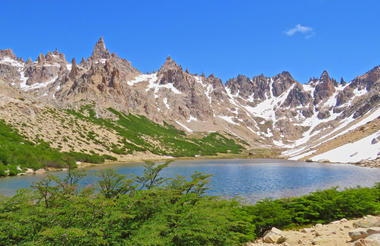
As previously described
